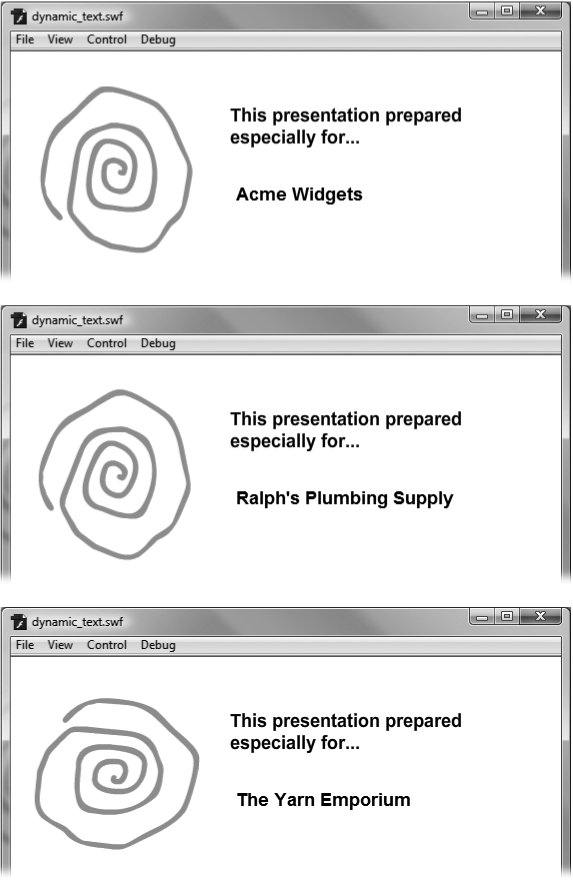Chapter 11. Interacting with Your Audience
Chapter 9 introduced you to actions and behaviors, both of which let your audience interact with your animation by pushing buttons, dragging images, typing in text, and so on. In this chapter, you see examples of common actions and behaviors that you can adapt to fit your own project. Think of them as recipes. You'll find out how to insert dynamic text into an animation at runtime, how to capture the information your audience types into a text field, how to create rollovers, how to add actions to buttons and Flash components, and more.
Note
For more examples of actions, check out Chapter 9 and Chapter 10.
Dynamic Text
Dynamic text is text that you insert into your animation at runtime, when the animation plays on your audience's computer (as opposed to when you create the animation).
Dynamic text is great for adding late-breaking updates to your animation: Think sports scores, weather reports, and news headlines. Dynamic text is also a good way to incorporate customized text into your animation without having to go to all the trouble of reworking the animation itself. For example, using dynamic text, you can create a single, basic animation and switch out the header text at runtime so that three different clients can play the same animation and see three different messages (Figure 11-1).

Figure 11-1. One animation with three different messages, ...
Get Flash CS3: The Missing Manual now with the O’Reilly learning platform.
O’Reilly members experience books, live events, courses curated by job role, and more from O’Reilly and nearly 200 top publishers.

